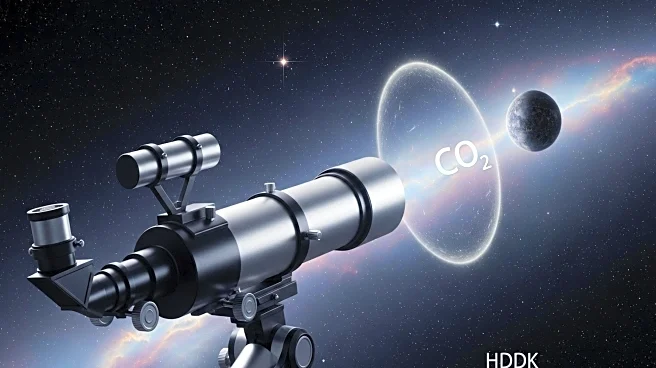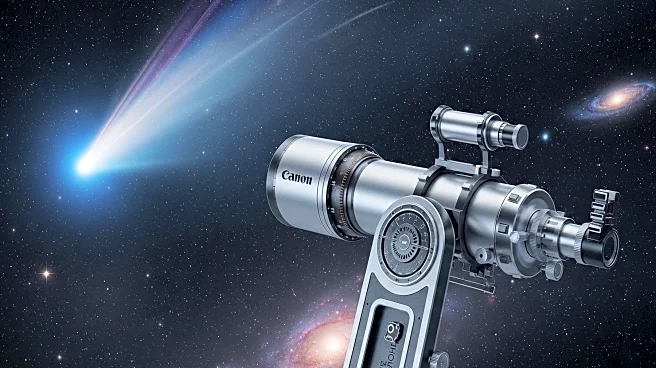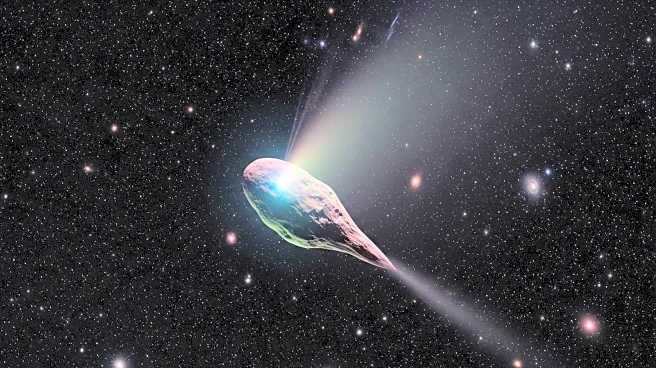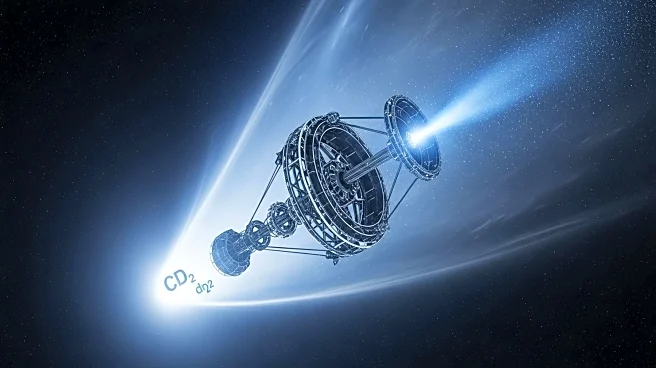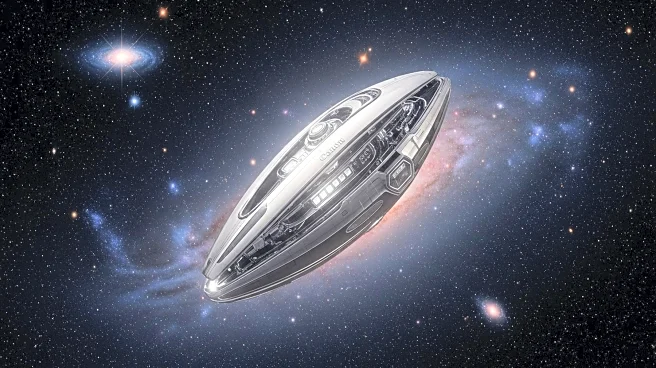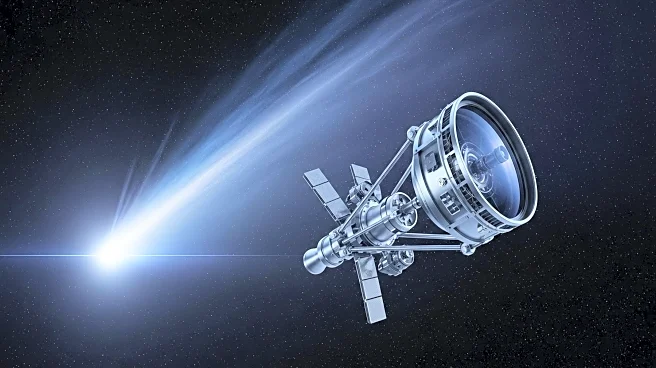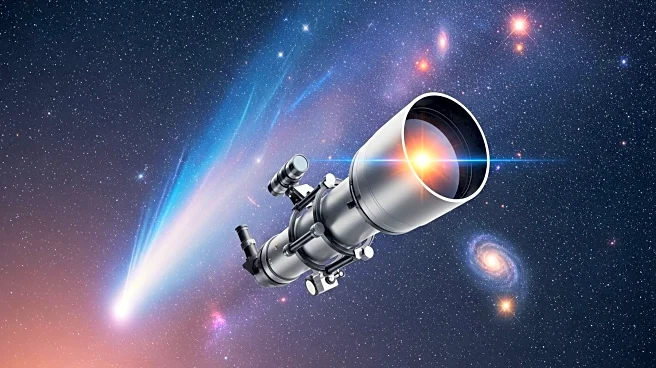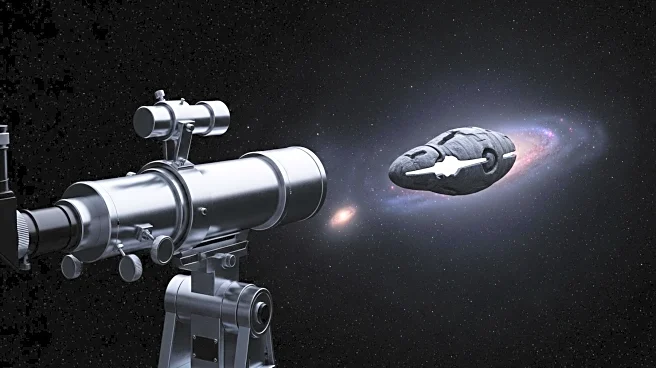What is the story about?
What's Happening?
NASA's James Webb Space Telescope and the Jet Propulsion Laboratory's SPHEREx have captured images of an interstellar object named 3I/ATLAS, revealing it is covered in a layer of carbon dioxide. This discovery has surprised scientists, as the object is emitting a significant amount of CO2 while releasing minimal water and carbon monoxide. Harvard astrophysicist Avie Loeb noted that the CO2 mass loss rate is much higher than expected for a comet at this distance from the Sun. The object lacks a typical comet tail, suggesting it may not be a naturally occurring space object. 3I/ATLAS is set to pass closest to Earth on October 30, but will be obscured by the Sun during this time.
Why It's Important?
The discovery of a CO2 layer on 3I/ATLAS challenges existing theories about interstellar objects and their composition. The unusual characteristics of this object could have implications for our understanding of space phenomena and the potential for artificial objects in space. The findings may influence future research and exploration strategies, as scientists seek to understand the origins and nature of such objects. This event highlights the capabilities of advanced telescopes like the James Webb Space Telescope in uncovering new cosmic mysteries.
What's Next?
As 3I/ATLAS approaches its closest point to Earth, scientists will continue to monitor its trajectory and emissions. The object’s passage behind the Sun will limit observation opportunities, but researchers will analyze available data to gain insights into its composition and behavior. The scientific community may explore theories regarding the object's artificial nature and its implications for interstellar travel and exploration.
AI Generated Content
Do you find this article useful?
